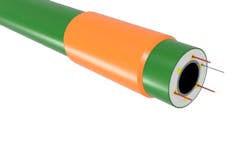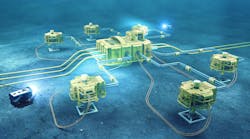Flowline heating process simplifies, cuts costs of subsea tieback installations
DeepOcean is collaborating with TotalEnergies, Equinor, Aker BP, Tenaris and LS Cable & System on FlowHeat, a new subsea flowline heating technology.
The intention is to cut typical manufacturing and installation costs by up to 35% and carbon emissions by 30% through the separation of pipeline and heating installation.
According to DeepOcean, developers of subsea tiebacks face various challenges in cold, deepwater environments. Tieback connections may have to address flow assurance issues related to wax and hydrate formation, and for long pipeline distances, heating may be required.
FlowHeat is said to simplify the flowline heating process by enabling installation of cables after the pipeline has been laid. And the technology provides the alternative option of installing the cables in a reeled pipeline.
“The key advantages include reduced topside weight, lower power consumption and less complex installation,” said Andries Ferla, DeepOcean’s technology director. “The cable is also repairable and enables real-time monitoring via optical fiber.
FlowHeat is presently suitable for tiebacks up to 30 km long, with a potential to increase in the future to 50 km, in water depths of up to 3,000 m. Installation can also be performed using smaller ROVs.
“Together, we believe we can unlock longer tiebacks and access to remote reserves,” said Florent Boemare, Offshore Solutions and Technology Research manager at TotalEnergies, which has supported the development since its inception.
Flowheat, the co-developers claim, can help reduce emissions by optimizing the use of pipelines, lessening the total number of installation days, and use of smaller vessels, if required, although it can be deployed from all types of vessels.
The co-venturers also claim cost reductions of up to 35% compared to traditional installation methods.
Initial small-scale and thermal trials are said to have demonstrated reliable cable installation across obstacles and longer distances, and a high level of electrical efficiency with low topside power demand. The technology can be deployed from all vessel types.
There is seen to be strong potential for applications offshore Norway in particular, were demand is high for cost-efficient flow assurance solutions for future subsea tiebacks. Brazil, the US, Africa are other target areas, while globally more than 300 potential electric heating projects by 2030 have been identified.
DeepOcean, as project owner and global subsea services provider (with funding from the Research Council of Norway), is responsible for research, engineering and project management, and it will work to optimize cable installation processes and subsea integration.

